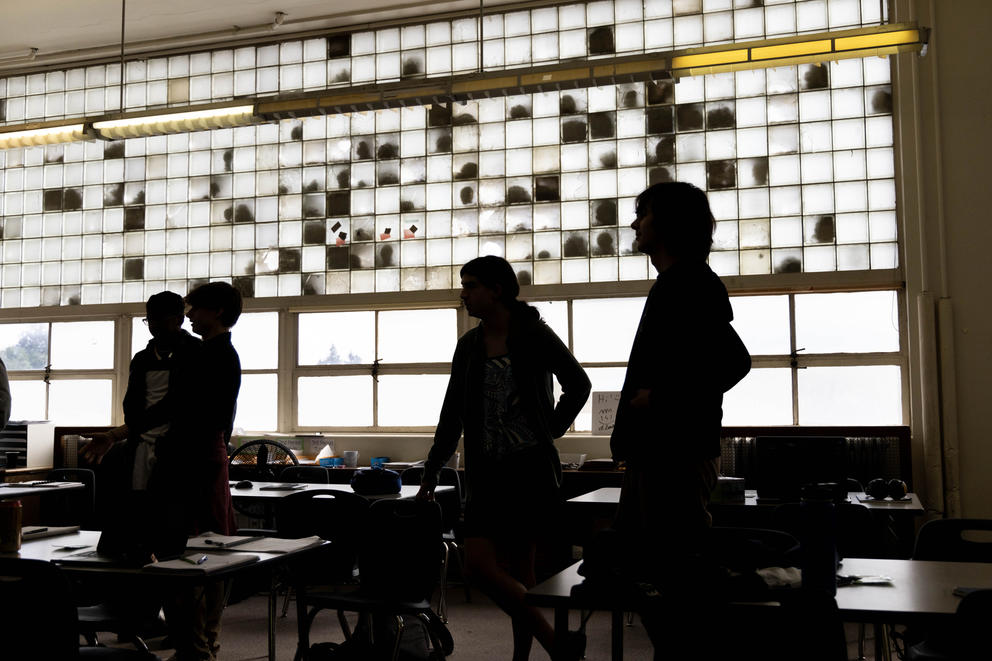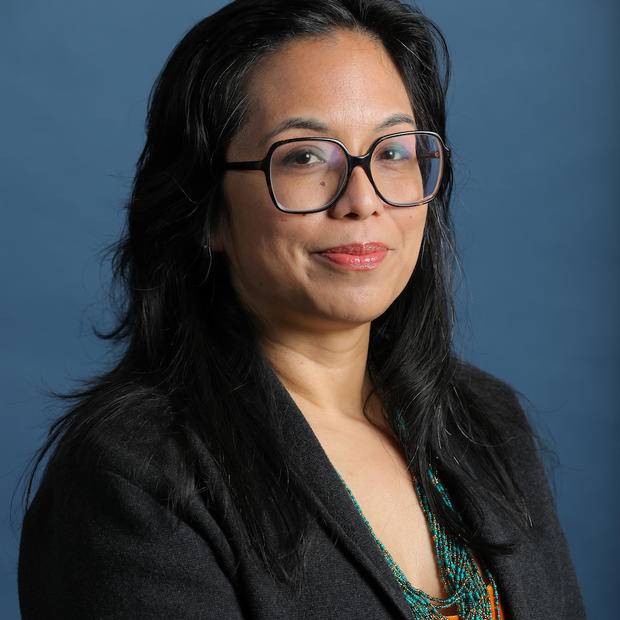In contrast, 172 out of 192 local school district levies – or 89% – passed statewide, according to figures supplied by the Office of Superintendent of Public Instruction. Looking just at operations levies that pay for instruction, that percentage is higher – with 91% of them passing.
In the Eastmont district, in Douglas County, it was the second time the district put this construction proposal on the ballot, after a November 2022 failure.
“We have really dramatically reduced the ask,” said Eastmont Superintendent Becky Berg. “From $185 million to $117 million, after interacting with about 900 community members.”
For this second go-around, the district removed improvements to athletic fields and construction for a building for its transportation and maintenance departments, but stuck with safety improvements and updates to four of the district’s elementary schools. The average age of the elementary school buildings in Eastmont is 60 years.
The district found other money in its budget to update the unsafe lighting and track for its athletic field, and opted to live with their current bus facilities.
“I call it looking for change in the couch cushions,” Berg said. “Transportation got a coat of paint. It still has dirt floors. We’ll make do with that.”
Supporters of the supermajority see it as not a hurdle but a checkpoint. Voters and lawmakers testified earlier this year that school districts should be required to make a better case to the voters for their projects and needs.
“Most taxpayers can see a good plan and they can see a bad plan. Sixty percent protects them,” former South Kitsap School District board member Jeff Daily of Port Orchard told legislators earlier this year.
In some communities, including the Blaine School District in Whatcom County, the different laws for bonds and levies resulted in their operations levy passing but their construction bond failing. Blaine’s operations levy received 58.19% of the vote, but their construction bond measure fell short with 54.81% approval.
“I’m very appreciative of the voters of our community and their continued support of the levy and the services that they provide to the students,” said Blaine Superintendent Chris Granger. “We have support in both measures. We were at 58% with the levy. We were hovering around 55% in the bond. That supermajority for bonds is a significant lift.”
Blaine’s $70 million 25-year construction bond would have replaced an expiring bond, and district officials maintained the same level of taxes as the previous one. The district hopes to update Blaine Middle School, constructed in 1956, and design a new elementary school in Birch Bay, as well as upgrade other schools.
“This is a tax of local taxpayers, to ask the local communities to fund local buildings,” Granger said. “If the local community says they’re willing to support it … It seems to me that a simple majority is an ample request for a bond measure. If there’s a part that’s frustrating, it’s to see that the voters’ clear support doesn’t allow us to move forward. I don’t see 55 [percent] to 45 [percent] as a small margin.”
Still, Granger acknowledged that voters have their reasons for their ballot choices.
“Voters consider all aspects of their life for making ballot decisions. We support all our voters, the yeses and the no votes,“ Granger said.
There have been attempts to change that law or the way that school construction is funded. In 2021, the Wahkiakum School District sued OSPI to compel the state to pay more for school construction in small districts, after that southwest Washington district struggled to get bonds passed to improve or replace existing facilities. However, Washington state courts ruled against the district. The state also currently supplies some matching dollars for school construction projects, but only if the local residents vote to pass local taxes first.
This year, a proposal to change the supermajority requirement for school bonds didn’t make it out of either chamber of the Legislature. Because the supermajority requirement is written into the state Constitution, it would have required a two-thirds vote in both chambers, followed by voter approval. But that change has happened before for schools: Lawmakers and voters changed the Constitution in 2007 to remove the supermajority requirement for all school levies, which has made them easier to pass in the 17 years since.
School districts across the state, as well as OSPI, have pushed for a parallel change for school bonds.
“Washington’s voters continue to support a well-rounded, high-quality public education for the young people in their community. However, our state’s undemocratic supermajority requirement for bond approval prevents many communities from fully leveraging the support they need,” State Superintendent Chris Reykdal said in a prepared statement about last week’s election.
As of Friday, the most recent vote drop in Douglas County shows Eastmont’s $117 million, 21-year bond measure coming so near, yet remaining so far – 59.49%.
“The supermajority is sort of counterintuitive for me,” said Eastmont’s Berg. “It’s tough in Eastern Washington. Bonds are very hard to pass in Eastern Washington. But people in Eastern Washington are supportive of their schools.”
That can be seen In Spokane County, where none of the five school bonds on ballots last week hit 60%, although four of them got 50% or more. However, with the lower threshold, all 17 of the school operations levies on Spokane County ballots passed, as well as seven out of eight of school levies for capitol projects, technology or safety.
Still, Granger in Blaine said that he is grateful that his district’s bond received 55% of the vote on its first time on the ballot. Many districts respond to bond failure by retooling their asks and re-running the measure. Blaine district officials plan to reach out to the community to figure out how to get across the threshold – by changing either the amount or their communications with voters.
“Fifty-five percent on a first ask … I see it as a vote of support,” Granger said. “Honestly, just looking at it, I don’t see it as a resounding no, other than we support you but we didn’t quite get 60%.”
Bonds vs. levies: What’s the difference?
Bond approvals are used to enable a government body, like a school district, to borrow money for large projects such as a new building, a major renovation or buying land for school facilities. The bonds are in place between 10 and 25 years, and the taxes collected pay back those loans. School districts are also allowed to run bonds for technology or buses.
Levies, on the other hand, generally pay for ongoing expenses. While the state is required to fund basic education, the local levies are meant to pay for things above the basics, but which districts feel are important to raise student learning levels. Whether that’s basic or not is a matter of ongoing debate.
Sometimes levies are used for things such as buses, safety and technology – and even construction. In some areas with a high-value property-tax base, such as Seattle or Bellevue, districts regularly run both construction levies and bonds to cover their facility needs. And some districts, such as the Castle Rock School District in Cowlitz and Lewis counties, have opted to run a construction levy after multiple attempts at a bond had failed. Castle Rock's construction levy passed on Tuesday with more than 54%, after the district struggled for years to get a bond passed. But the challenge for school districts that adopt this approach is that they usually have a shorter time to collect the tax money needed for the project.



